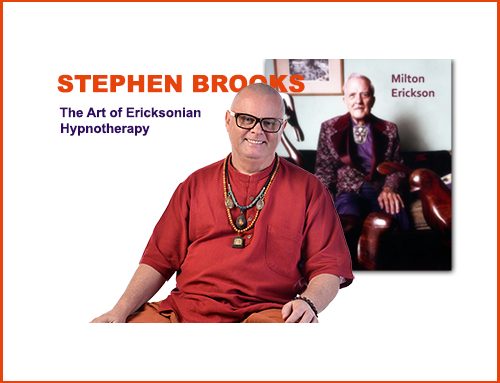Trainee hypnotherapists need to know when someone is going into trance or is already experiencing hypnotic trance, because when people go into hypnosis many changes occur, and the hypnotherapist needs to utilise these changes. These changes should always be noticed instantly by the observant therapist. These changes are called Minimal Cues. These are the identifiers of hypnotic trance. The changes below do not always happen in every hypnotic subject but most will be seen at some time during the trance experience.
Eyefixation.
One of the main principles of hypnosis is to capture attention. If you are telling a compelling story or are using direct eye contact the subject will often de-focus their gaze and have their eyes fixed on either a random place in the room (maybe visualising the story you are telling) or on your eye contact. In these cases you will often see a lack of blink reflex and open eye catalepsy (inability to blink or close the eyes).
Pupil dilation.
When the subject’s eyes defocus you will see a relaxing of the muscles around the eyes and, depending on the amount of illumination in the room, pupil dilation.
Change in blink reflex.
Often the subject’s blink reflex will start to slow down. This is a sign that the subject is going into trance. You can utilise this slowing down in two ways:
- You can match the movement of your own eye blinks to that of the subject and then gradually slow down your blink reflex to non-verbally suggest to the subject that their eye lids will shut.
- You can associate a hypnotic command such as “deeper”, “heavier” or “comfort” to their eye blinks. By repeating the command each time they blink, even if it occurs in mid-sentence as you speak, you will be associating, unconsciously, the feelings related to the commands, to the eye blink. This will induce further blinking and then eye closure.
Rapid Eye Movement
When people dream their eyes move rapidly back and forth from left to right. They are visualising images associated with their dream. The same phenomena happens in trance. Often you will see REM (Rapid Eye Movement) when you ask the subject to visualise something.
Eyelid Flutter
Some subjects develop an eyelid flutter. This is an automatic response in some people and does not indicate nervousness of any kind. If the subject is concerned about it you can utilise the flutter as a ratification of the trance by commenting on how this particular phenomena is characteristic of a good hypnotic subject.
Smoothing of facial muscles.
The muscles in the face will usually smooth out and the patient will appear more attractive. They will lose signs of tension in their face and their jaw or shoulders may drop a little. Sometimes subjects hold on to the tension in their jaw or shoulders and you may need to encourage them to relax these muscles with some gentle indirect suggestions.
Slowing of respiration.
The subject’s breathing will usually slow down and may get deeper. If the breathing becomes too laboured they may have fallen asleep, in which case you should gently wake them and start the induction again. Usually they develop a nice slow comfortable breathing rate and you can associate words like comfort and deeper to this rhythm to encourage these feelings. It is better to associate these words with the subject’s exhalations as the body is naturally relaxing more on the out-breath.
Reduction of the swallow reflex.
People normally swallow about once or twice every minute. In hypnosis this swallowing can stop altogether. It is not unusual to find a subject not swallowing for half an hour. If the swallow reflex does not stop altogether there is usually at least a slowing down of the reflex. If you see an increase in swallowing it is a sign that the subject is a little nervous.The increase in swallowing is not caused by an excess of saliva but by a dryness in the mouth. This dryness is caused by apprehension or fear and the swallowing is generally a conscious response made by the subject to prove to themselves that they can still swallow comfortably. Sometimes very nervous subjects get quite concerned with this difficulty in swallowing. If this is perceived then you should re-assure the subject without placing too much emphasis on the difficulty they are having.
Body Immobility.
The subject will also develop a comfortable immobility in the body and limbs. They may adjust their position once or twice to get comfortable but after that they usually relax into a comfortable position. If the subject continues to fidget they may be nervous or the chair may be uncomfortable. If they are nervous you can give suggestions that they need not go any deeper into a trance than is right for them at that moment.
Inner absorption.
When people daydream they appear very absorbed in their inner thoughts. They will often demonstrate all of the above Minimal Cues. So inner absorption is a term used to describe the collective cues of trance.
Response Attentiveness
You can usually tell good hypnotic subjects by watching for their minimal cues. Pupil dilation is a good indicator of trance responsiveness. The term “Response Attentiveness” describes the collective minimal cues of trance. In the context of a therapy session you will see the Patient “drift off” from time to time during the conversation. This is usually accompanied by a shift in the facial expression, a softening of the facial muscles, sometimes looking away, de-focusing and a slowing of the respiration. When you see this special combination of cues you can encourage trance to develop further by going in to your “trance style” of communication. The Patient will associate your shift in communication style with their shift into an altered state and its associated minimal cues.
You should look for head nods and signs of agreement. Within the context of a group conversation you can usually identify the most responsive hypnotic subjects by watching for a combination of pupil dilation and head nodding. Assuming that their pupil size is not due to a medical condition or medication, the person with the largest pupils who is also appearing to listen intently by nodding their head is the most likely hypnotic subject.
Communicating with the Unconscious
In hypnotherapy there is pre-supposition that the Patient has a conscious and an unconscious mind.
Of course this is only a model. This model has evolved from the early Freudian concept of the unconscious being a seething pit of repressed memories and experiences revolving around sex to the more humanistic perception of theunconscious mind being a reservoir of resources and skills to be nurtured and treasured. In hypnotherapy we include a bit of both of these poles.
We see one of the functions of the unconscious as being the security guard of traumatic feelings and emotions. In this mode the unconscious holds back some experiences and memories to protect the Patient from pain. Whilst these experiences and memories may be negative they are not necessarily caused by early sexual experience.
One of the unconscious mind’s other functions is to store and sort positive experiences and memories. It is from this “store” that the therapist takes his ideas for therapeutic interventions. The third function is to oversee the bodies autonomous processes and healing mechanism.
Therapists prefer talking to the unconscious rather than the conscious mind.
The conscious mind contains the Patient’s learned limitations. These limitations often get in the way of successful therapy. After all, if the Patient knew consciously how to get better, why would they come to a therapist. Despite this obvious revelation many Patients like to participate consciously in their own healing or treatment. It is only natural that Patients should try and help themselves through conscious effort. So the therapist also has to educate the Patient about the functions of the conscious and unconscious mind and play down the former whilst praising the latter. Analogies About the Patient “taken for granted” abilities such being able to write their name without effort or tie a shoelace without thinking serve to highlight the enormous competency and dexterity of the unconscious mind.
Some Patients have difficulty with the concept of mind.
As the mind is physically elusive it is often had for analytical type Patients to accept it as a reality. Of course they are quite justified in doing so as it is only a model after all
– designed so that we can write books about it. With these kinds of Patients is useful to talk about the mind in terms of brain. The brain has two hemispheres. This is fact. It is also fact that the two sides of the brain have different functions. Each controlling different cognitive processes, behaviours and emotions. The right brain is seen as the creative, dreaming and imaginative brain whilst the left brain is seen as the analytical, logical and reasoning brain. In terms of conscious I unconscious processes we can suggest that the right brain is more likely to be the centre of unconscious process and the left brain to be more responsible for conscious thought.
Because the body is wired to the two hemispheres cross laterally we can also surmise that one side of the body, the left side, is more closely linked via the right brain to unconscious processes. The reverse being true for conscious processes.
Most of the language skills we use in indirect hypnotherapy are designed to appeal to the unconscious mind.
Whilst we will often tell the conscious mind to “go and do something else” whilst we work intimately with the Patients unconscious. By working more closely with the unconscious (right brain) of the Patient we hope to bypass the conscious resistance or sabotage sometimes introduced by the Patient’s conscious doubts about the method of treatment. Patients are most persistent in wanting to help themselves, and the therapist, resolve the issues they bring into therapy. Only by developing an honest relationship with the Patient’s unconscious cognitive processes can we truly hope to work therapeutically without interference from the part of the Patient that has perhaps created their problem in the first place and certainly is an ongoing participant in its maintenance.






